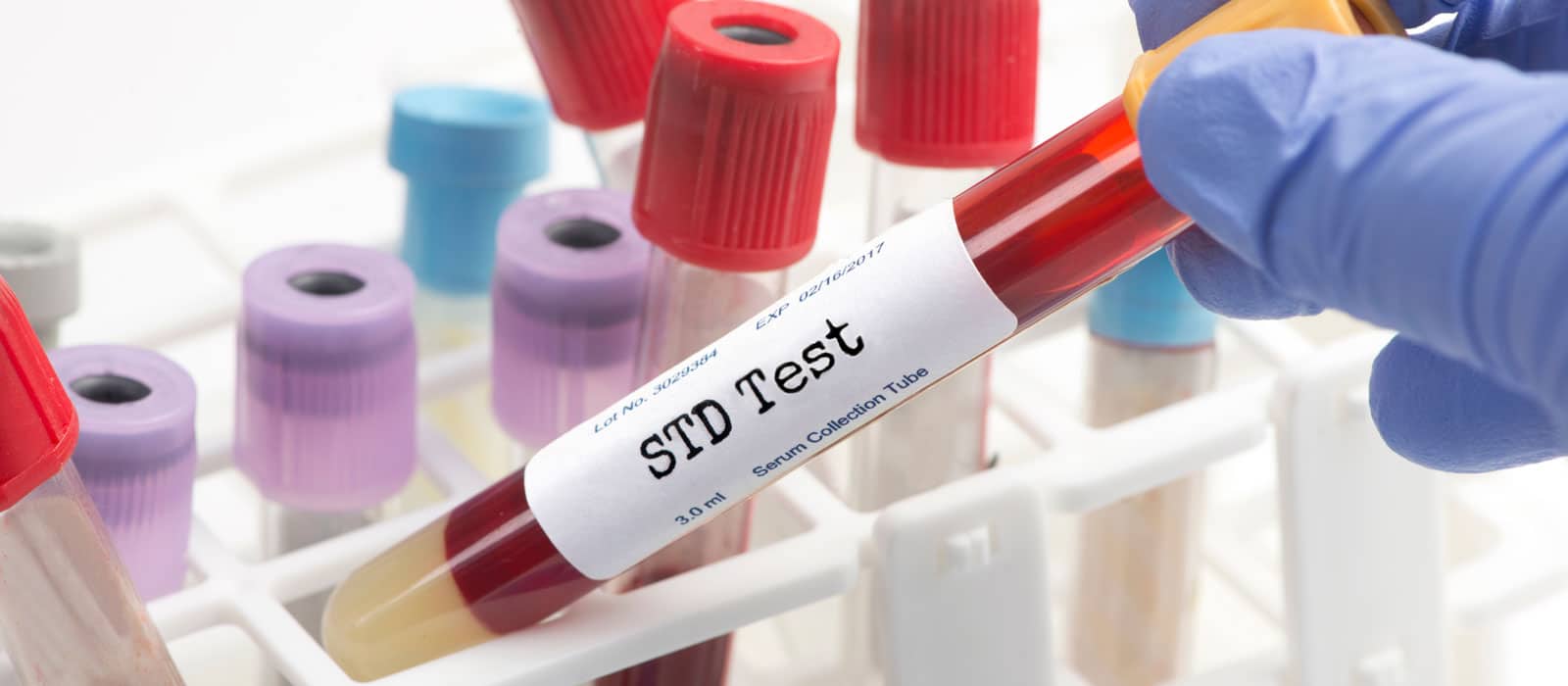Sexually transmitted diseases can be caused by plenty of bodily fluids. They may be a result of coming into contact with urine, saliva, blood, mucus, or semen.
The problem is that STDs are contagious, and they don’t always show symptoms right away. So, testing them must be done cautiously and at the right time.
Some STDs can have a window period of as long as 150 days where they’re not detectable in the blood.
This brings us to the question: do normal blood tests show STDs? Not unless you ask for that.
Here’s everything you need to know about the matter:
Table of Contents
Do Normal Blood Tests Show STDs?
No, normal blood tests don’t usually show STDs unless you request to be tested for them. However, that doesn’t mean that STDs aren’t detectable through blood tests. Some of these diseases, like hepatitis, syphilis, and HIV, can show on a blood test, but you’d have to request STD screening.
STDs are usually diagnosed through a series of tests, including blood, fluid, urine, and saliva-based swabs.
Unfortunately, the tests that detect antibodies produced because of an STD infection aren’t part of a normal CBC. Besides, there are plenty of STDs that can’t be detected through blood, so it’s best to consult with your healthcare provider about what test to take.

What STDs Show on a Blood Test?
Luckily, not all STDs need swab samples to get diagnosed. Some diseases can be ruled out based on a blood test. Here’s an overview of each one and how it’s tested:
Human Immunodeficiency Virus (HIV)
HIV easily shows in blood tests because of the antigens found on the surface of the virus. The test detects both the antigens and the antibodies that the patient’s body produces to combat the disease. That’s why it’s rare to get a false result on these tests.
Other ways to detect HIV include taking a urine test or a saliva-based swab. However, saliva swabs are usually followed by a blood test because they’re not always accurate.
The thing with HIV is, patients usually need to wait for a while before getting tested because there’s a window period where the virus may not be detected even if it’s there.
Antibody tests usually have a window of 23–90 days, while the window for antigen tests is 18–45 days.
Hepatitis B
Hepatitis B is commonly detected through a series of blood tests. The tests show two types of antibodies associated with the disease: hepatitis B surface antibody and hepatitis B core antibody.
Some tests also detect the antigens on the surface of the virus, commonly called HBsAg, but they’re used for different purposes.
Antigen tests are used to tell if the patient currently has the disease, while antibody tests are used to tell if the patient recovered from the infection or is immune to the disease.
Tests that detect hepatitis B core antibodies are often used to determine whether the infection is chronic or acute.
The problem with hepatitis B is that it has a window period of 60–150 days, and it can only be diagnosed through a blood test. Imaging studies are often used, but they may not be enough on their own.
Herpes Simplex Virus (HSV)
The herpes simplex virus is the primary cause of genital herpes, which affects around 12% of the population in the US. It can be detected through a blood test, but like HIV, patients need to wait for a window of 4–12 days after exposure to get accurate results.
Genital herpes can also be detected through a swab test, where the technician will take a sample from the fluid in the sores caused by the virus. In fact, this method is more common and more accurate than a blood test.
A blood test will only determine if you contacted the virus in the past because it looks for HSV antibodies. So, it may give a positive result when the infection has already cleared up.
Syphilis
Syphilis can be diagnosed using both a blood test and a swab test. However, patients need to wait for two to six weeks before getting a blood test because the antibodies will need some time to be detectable.
That’s why a swab is often the first choice when symptoms of the disease appear.
When it comes to blood tests, syphilis patients usually have to get tested twice. First, they go through treponemal tests that detect the antibodies in the body. If the results are positive, they go through another test that detects nontreponemal antibodies, confirming the disease and assessing the infection’s extent.
In the late stages of syphilis or patients who have a history of the disease, a spinal fluid test may be needed to confirm the infection.

What STDs Don’t Show on a Blood Test?
Unfortunately, some STDs don’t show on a blood test. In that case, they can only be diagnosed using swab tests, which involve taking a sample from sores or genital tissues.
Some of these STDs include gonorrhea, trichomoniasis, chlamydia, and HPV, which is the most common STI in the US.
Some blood tests are available for HPV, but they only detect antibodies of particular virus types, so they’re not accurate and aren’t usually requested by the doctor.
To detect these conditions, the swabs taken are used to grow the bacteria in controlled labs to detect its presence. In other cases, the swab is tested genetically to detect if there’s an infection. Some swabs may be taken during a pap smear rather than on their own.
Final Thoughts
Typical blood tests don’t include STD screening, so if you want to get tested for one of these diseases, you’d have to ask specifically for it. It’s always better to consult your healthcare provider first because some STDs have long window periods, so they won’t get detected in a test even if you’re infected.
Besides, some STDs don’t show in bloodwork. In that case, you’d have to get a swab test to confirm the disease or infection.


